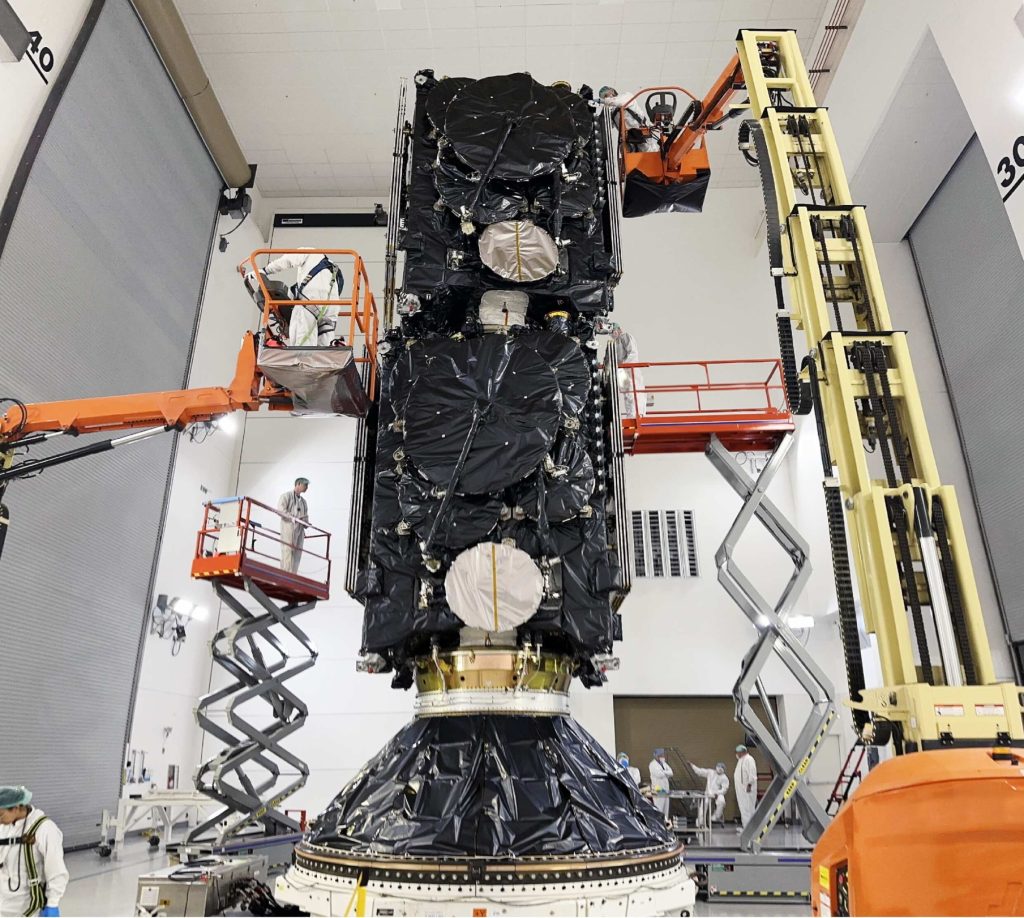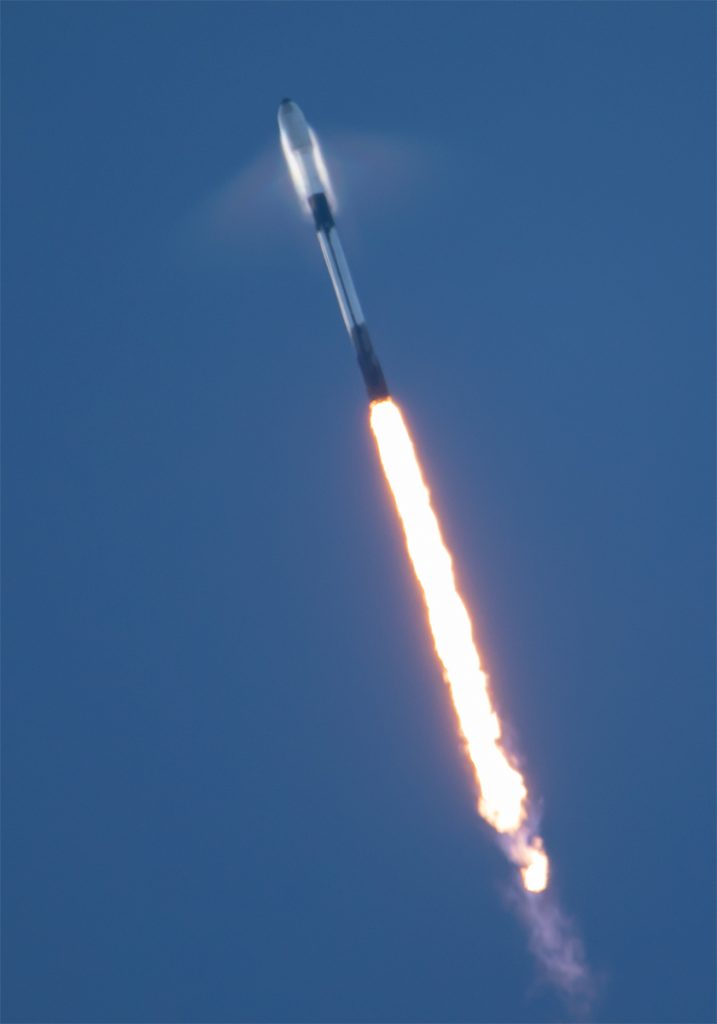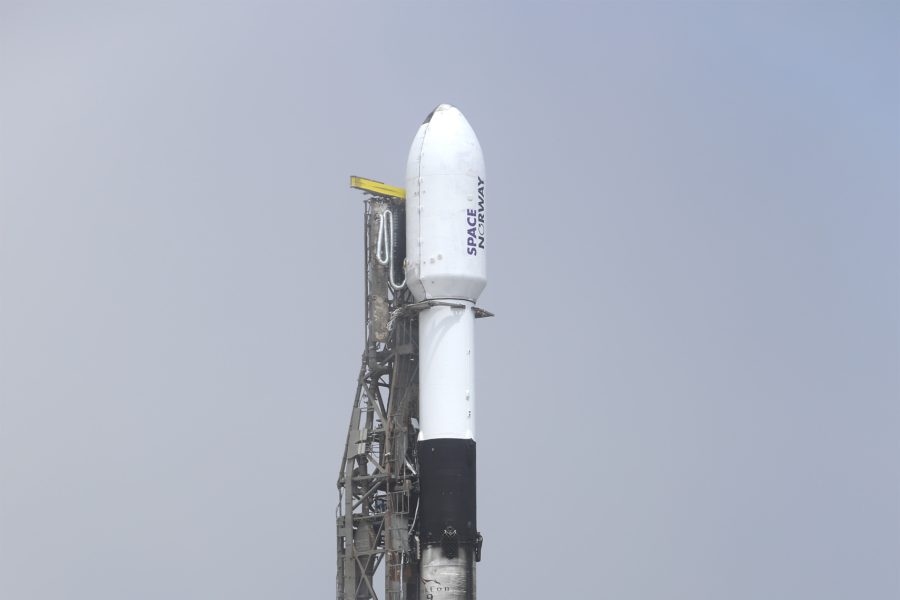A SpaceX Falcon 9 rocket blasted off from Vandenberg Space Force Base, Calif., on Aug. 9, carrying a historic collaboration between the U.S. Space Force and a foreign ally—two satellites procured by Space Norway that will host USSF payloads for Arctic communications.
The launch marked the first time an operational Space Force payload has deployed on a foreign-owned satellite, a collaboration USSF leaders say will save millions of dollars.
Watch Falcon 9 launch the Space Norway ASBM mission to Molniya transfer orbit https://t.co/1mmLEpcKqj— SpaceX (@SpaceX) August 9, 2024
The Enhanced Polar Systems-Recapitalization payload will provide tactical, extremely high-frequency satellite communications to U.S. forces operating in the High North, where the Advanced Extremely High Frequency (AEHF) Milstar satellites don’t offer full coverage.
The original EPS system is still on orbit, hosted by two classified satellites, according to a Pentagon acquisition report. Its projected service life is 10 years—but polar elements for successor programs like Evolved Strategic SATCOM and Protected Tactical SATCOM are not scheduled to launch for years. The Department of the Air Force decided to procure new EPS payloads as a stopgap in 2017.
The challenge was cost. Two years later, the U.S. Air Force and the Norwegian Ministry of Defense signed a memorandum of agreement to join forces on the Arctic Satellite Broadband Mission, laying the groundwork for a long and complicated partnership. Space Norway, a commercial company owned by the Norwegian government, procured the satellites from Northrop Grumman, which also made the EPS-R payloads. Additional payloads for the Norwegian Ministry of Defense and ViaSat, a satellite communications company, are also on board
In July 2023, the Rand Corporation wrote in an analysis of Air Force security cooperation projects with allies, including EPS-R: “The Arctic Satellite Broadband Mission effort experienced budgetary, bureaucratic, regulatory, cultural, and technical barriers, with bureaucratic and regulatory barriers being the most problematic.” It took almost two years to finalize the memorandum of agreement, even with leaders pressuring acquisition officials to get the deal done.
While the Space Force hoped to have the satellites and their payloads on orbit by early 2023, delays pushed the timeline back. Not until May 2023 did the U.S. accept the ground system for the program. When the payloads passed their final tests, the stage was set for the Aug. 9 launch.

According to Space Force budget documents, USSF plans “on-orbit testing, operational utility evaluation, and operations acceptance” in fiscal 2025.
In a release after the launch, Northrop Grumman noted that it is providing two Satellite Control Systems in Norway for Space Norway to operate, suggesting the U.S. Space Force will not be responsible for operating the satellites themselves.
Space Systems Command did not immediately respond to a query from Air & Space Forces Magazine seeking additional operational details.
Future international projects are already in the forecast. In 2020, the service signed an agreement with Japan to host space domain awareness payloads on the Quasi-Zenith Satellite System. Those payloads have already been delivered to Japan and are awaiting launch, which is currently projected for fiscal 2025. Rand analysts noted in their report that the payload going on QZSS will provide “a space domain awareness capability that the United States arguably did not need but pursued for the overall sake of cooperation.”
International complexity will continue to be a challenge. Rand analysts noted that “the large size and complexity of these programs, as well as the lack of a single voice across the U.S. space [security cooperation] enterprise, challenge the scale and pace of collaboration.”



